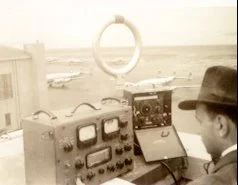
We've been talking about why negative feedback renders irrelevant even large variations in the gain characteristics of individual tubes and transistors. As is often the case, I had to go through several technical tomes before I found a book that really answered my “how does it really work” kind of questions. Enlightenment on negative feedback came to me from the days before Pearl Harbor, from War Department Technical Manual TM-11-455 “Radio Fundamentals,” published on July 17, 1941.
Figure 1 shows an amplifier that increases the input voltage by a factor of 100. In Figure 2, 10 percent of the output voltage is fed back – out of phase – to the input. Now, when trying to understand feedback amps, you can find yourself trying to figure out how changes to the input produce changes to the output, which in turn produce changes at the input, etc. Like the amplifier you are trying to understand, you become like a dog chasing his tail! TM 11-455 elegantly breaks this cycle. It has us think this way: Assuming we maintain 100 mV at the output, with 10% fed back, how much of an input signal will we need? Well, the amplifier itself still amplifies voltage by 100. So we still need a net voltage of 1 mV at the input. So now we need a signal voltage of 11 mV to produce the 100 mV output (Figure 2). The feedback cancels 10 mV, putting 1 mV on the input. Negative feedback reduces gain.
How does negative feedback reduce the impact of variations in the gain characteristics of the individual devices? Without feedback, if we substituted our 100X amplifier for a device with a gain of only 50, our 1 mV input would produce only 50 mV out, possibly playing havoc with our overall design. We’d need an input of 2 mV -- a doubling of the input voltage -- to make up for the variation, to get our desired 100 mV output. But look at the situation with feedback (Figure 3). We still assume 100 mV at the output, and 10 percent negative feedback. But now, even though device gain has dropped from 100 to 50, we only need an increase in signal input from 11 mV to 12mV. With this feedback arrangement, if we kept the input signal level at 11mV, and then used a transistor that happened to have only HALF the voltage gain of the original device, the output voltage would drop only to around 92 mV, a drop of about 9% -- not the 50% drop we saw in the circuit without feedback. Negative feedback reduces the impact of gain variations from device to device. It makes our amplifier stages more “beta independent.” Negative feedback reduces the impact of gain variations from device to device. It makes our amplifier stages more “beta independent.” Our thanks to the War Department!









.JPG)
































